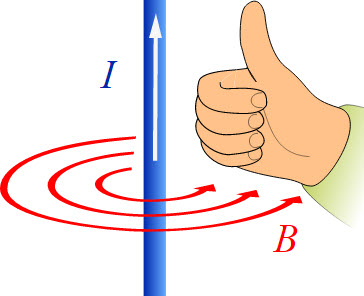 |
Electromagnetism
Electricity and magnetism are closely related to each other. Here are some key interactions between these two disciplines.
a. An electric current always produces some magnetism.
b. Production of large scale electrical power involves magnetism.
Some Important Aspects of Electromagnetism
In electromagnetism, there are a few areas that are of great interest to us. First, what happens when a current flows through a conductor? Second, what happens when a conductor is moved so that it cuts through a magnetic field? Third, what happens when a magnet field is allowed to cut through a conductor? Let’s take these questions one at a time.
Current flowing through a conductor
Two main things happen when a current flows through a conductor. First, heat is produced and the temperature of the conductor goes up – in this discussion we are not interested in this aspect. Second, the current causes creation of a magnetic field around the conductor. This field, like all magnetic fields, has a direction – that means if you place a small magnetic compass in the field, the field will have an effect on the alignment of the needle.
This phenomenon is illustrated by the figure provided here.
The figure illustrates that if you place your right hand as shown, with your thumb pointing in the current’s direction, then your fingers will show the direction of the magnetic field.
When an electric current is passed through a solenoid (or a simple conductor,) a magnetic field is created.
In the illustration provided here, an electric current passes through a straight wire. Here, the thumb points in the direction of the conventional current (from positive to negative), and the fingers point in the direction of the magnetic lines of flux.
This phenomenon is referred to as Ampère's right hand screw rule (also called right-hand grip rule, coffee-mug rule, or the corkscrew-rule.)